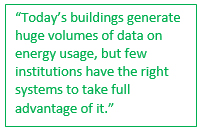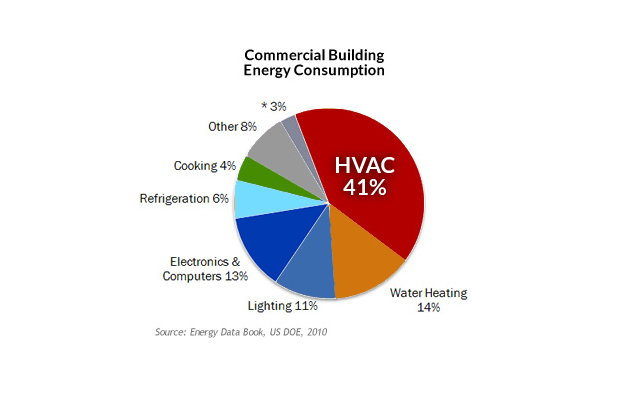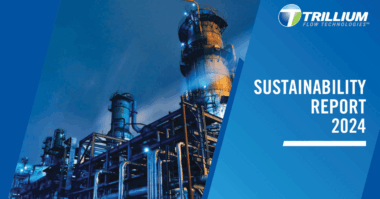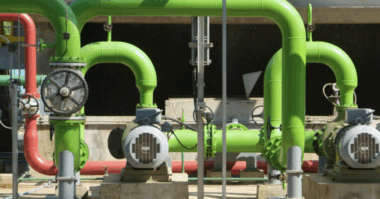Authors: Kurt Gokbudak, Systems Architect, Schneider Electric, and Jack Creamer, Market Segment Manager, Pumping Equipment–Industry Business, Schneider Electric
Aging buildings with older systems typically are challenged with the following issues:
Increased maintenance costs
As operating costs rise, budgets remain flat, and maintenance backlogs grow, the work and cost involved in upgrading older buildings rise. For some aging buildings, maintenance costs account for almost as large a percentage of a facility’s operating budget as energy expenses. For instance, an APPA report says work orders in educational buildings between 25 and 50 years old average $2.35 per square foot as compared to $1.40 for buildings under 10 years old.1
The report also notes that older buildings have higher maintenance backlog costs. For buildings between 25 to 50 years old, for instance, the cost is $110 per gross square foot of building. For buildings 50 years old or older, the cost is $160, while maintenance backlog costs for buildings 10 years old or less are, on average, only $20 per gross square foot.
Hotel owners are facing similar challenges. In fact, a Hospitality Technology study notes that two of the top challenges for hoteliers are maintaining existing infrastructures and outdated technology infrastructures. 2
Inefficient energy usage and outdated systems
According to the U.S. Energy information Administration (EIA), office buildings are the top users of energy, followed by mercantile, education, healthcare, and lodging. From 1979 to 2012, the share of electricity in total energy end-use consumption in commercial buildings increased from 38% to 61%. This comes from increased use of existing electrical equipment and the introduction of new types of equipment, such as computers, office equipment, and telecommunications equipment. The increase is also attributed to the additional electricity consumption needed for cooling and ventilation.
Another underlying energy-consuming application across several of these building functions is Pumping. Often overlooked, this includes integral functions, such as chillers and boilers, or peripheral functions, such as circulators. Booster pumps, required for some building plumbing and water supply systems, also contribute significantly to building energy usage. Building-based pumping applications can also represent significant savings potential for those buildings.3
Because of their age, the outdated systems in older buildings often use excessive energy, which adds to already high operational costs. And although many buildings utilize energy management systems, such as an integrated building management system (IBMS), these too have aged and are most likely obsolete and not performing well.
Plus, today’s buildings generate huge volumes of data on energy usage that could help improve energy usages, but few facilities managers have comprehensive tools that allow them to interpret and apply that data. In addition, because older building management systems are rarely upgraded, and have fallen behind the latest technology, so the amount of energy and building data facilities used for efficient maintenance and management is limited.
Outdated IT and communications infrastructures
Fifty years ago, when many of today’s existing facilities were built, the Internet was just a concept. But office occupants, hotel guests, and students are part of a highly connected society and they expect the infrastructure in their buildings to support them technologically.

Facilities that were built 40 or 50 years ago were not designed with laptops and mobile devices in mind. A simple example is electrical outlets – with every occupant and visitor using one or more mobile devices, there is a greater need for more outlets today to support worker productivity. And innovations like global collaboration, which is important both in the office and on campuses, requires an advanced IT and communications infrastructure that an older building can’t support without modernization.
Appropriately used space in facilities
The physical space allocations in older buildings are very different than the ones build from the ground up today. Buildings constructed 40 or 50 years ago are not equipped with the physical infrastructure to accommodate today’s extensive communication network of fiber optic cabling, Wi-Fi routers, and other data center equipment. Consequently, without the proper design, this equipment is placed in spaces that are ill-fitted for it, which can compromise its functioning and cause excessive use of energy.
In higher education institutions, space allocation today is very different as well. Facilities are a school’s most valuable asset, yet it is not uncommon for most institutions to have little to no awareness of what buildings are being used for and when. In fact, it is not unusual for classrooms to be unoccupied 60% of the time.5 Similarly, in the hospitality industry, guest rooms are unoccupied 70% of the time, yet account for 40-80% of hotel energy consumption.6
Footnotes
1 Leveraging Facilities for Institutional Success, APPA, 2014
2 2017 Lodging Technology Study, Hospitality Technology, 2016
3 Energy Use in Commercial Buildings, U.S. Energy Information Administration, 2016
4 Energy Data Book, US DOE 2010
5 Is your space working up to its potential?, Sightlines
6 Guest Room Management, Schneider Electric
About the Authors
Kurt Gokbudak is a systems architect for Schneider Electric. He focuses on understanding the energy and operational challenges and needs that facilities face today so Schneider Electric can provide the best tools to address them and better position these facilities for the future. He has been with Schneider Electric for 5 years and has held sales, marketing, and operational positions throughout his 25-year career. He is a Certified Energy Manager (CEM) and is an active member of the Association of Engineers (AEE) and the American Society of Heating, Refrigerating, and Air-Conditioning Engineers (ASHRAE). He holds a bachelor’s degree in mechanical engineering from the University of Illinois.
Jack Creamer is Schneider Electric Segment Marketing Manager – Pumping Equipment, based in the United States. Mr. Creamer has more than 30 years in the Electrical Industry, and has been involved for 10 years in the Pumping Industry. He is involved in key industry organizations such as the Hydraulic Institute and Submersible Wastewater Pump Association, where he holds both Committee Chair and Board level positions. In his time in the Pump industry, he has help Schneider create numerous solutions that both enhance pumping efficiency and address issues such as maintenance and downtime.




